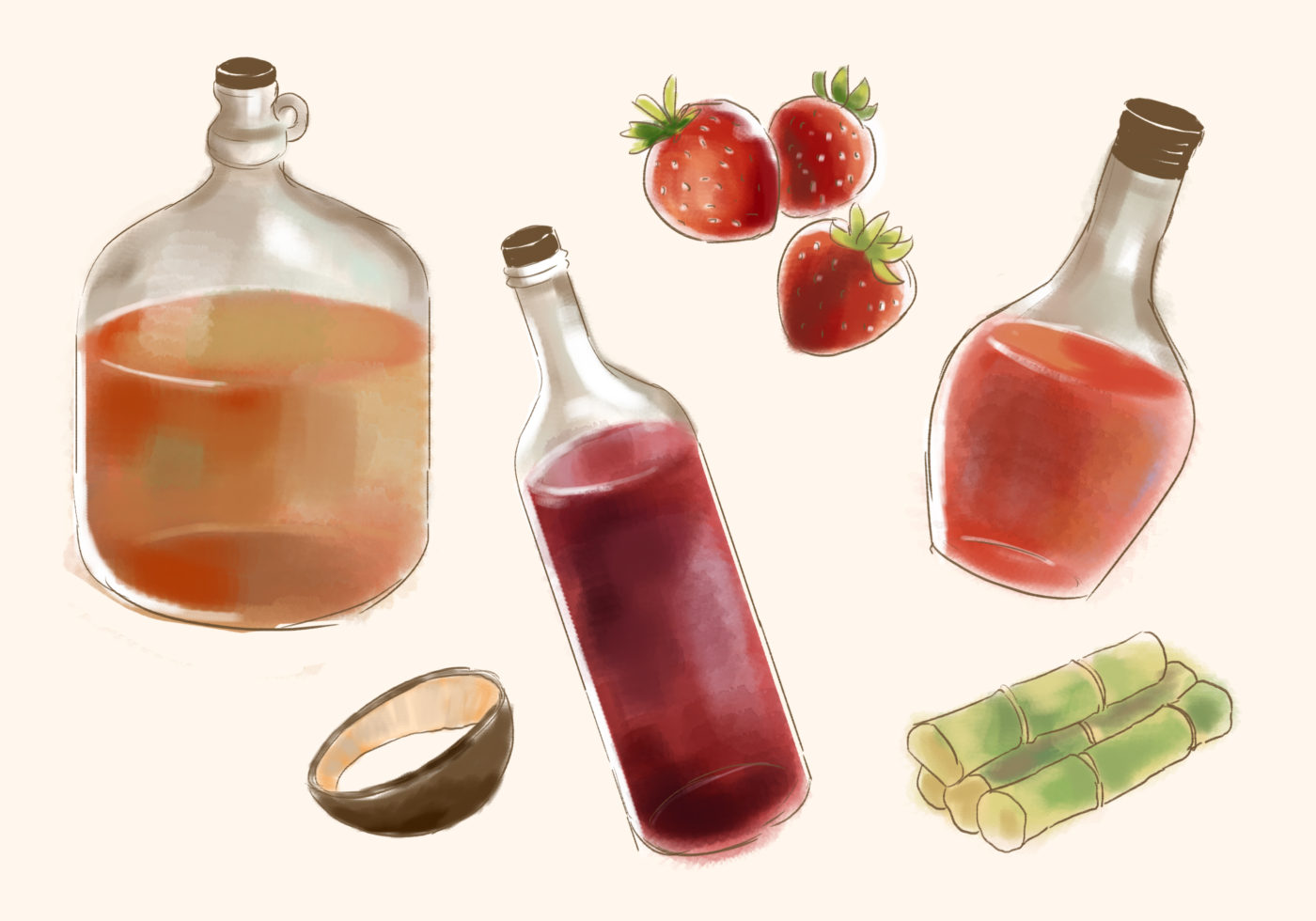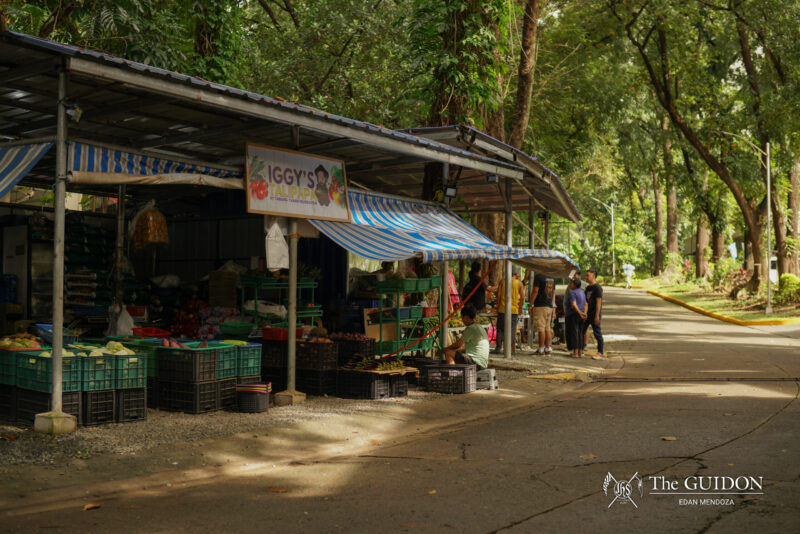In local drinking culture, beer is usually the go-to drink among Filipinos. Choices from Pale Pilsen, Lights, or Red Horse are available in almost every bar, restaurant, and sari-sari store. In rare occasions where wine is talked about, it is usually the imported labels that gain attention from Filipinos. When it comes to local wine, the common and most renowned variety is the lambanog.
However, hidden between the hills of the countryside, homegrown wines are treasures that very few people know and talk about. Homegrown wines offer more than just a specialty of flavors with their peculiar ingredients. These tangible assets are also pivotal in enriching the Philippines’ cultural heritage.
Grounding roots
Ilocos Sur is usually known for their scrumptious crispy pork belly called bagnet, and their fresh stuffed pastry, empanada. Unknown to many, the place also takes pride in its basi, a homegrown wine made from fermented sugarcanes. Historically rooted in the Ilocos region, it was even the reason for the 1807 Basi Revolt, when Filipinos fought for their freedom to produce, buy, and sell the alcohol without the Spanish authorities’ intervention.
Up in the mountains, Baguio’s delicious strawberry jam has also been creatively sourced as the main ingredient of the local wine dimbeng. As reported by SunStar Baguio, “This type of raw wine is produced by separating the bubbly froth from the boiling strawberry jam, adding native herbs or yeast, and storing the concoction in clay jars.”
On the other hand, although tuba is produced in various provinces such as Batangas, Leyte, and Palawan, it is said to have originated from Bulacan and other Visayan regions. The main ingredient, coconut sap, is fermented until it turns into wine. It is lighter than lambanog, and it is known to have a strong bitter taste.
Aside from their unique tastes and specialty ingredients, homegrown wines also promote the welfare of local farmers and ultimately, our heritage.
“It gives us a sense of place,” says Cultural Heritage Program Head and Sociology and Anthropology Department Professor Fernando Zialcita, PhD. “You have to establish that a certain flavor of [wine] is found only [in a certain place]. It creates a sense of pride.”
However, Zialcita says that these wines are not marketed well enough. “There should be marketing efforts. Producers have their own idea. I don’t think they think about the marketing part, I think they’re just content with the production part,” Zialcita says.
“A lot of times, these producers only produce for their own locality, [but] they [should] want to attract a larger audience.”
From roots to routes
Homegrown wines also help the localities where they come from, increasing tourism. Aside from this, these local drinks also show the importance of craftsmanship as well as the craftsmen and farmers themselves.
UP Land Wine owner Jefferson Sikasik has been in the business since the ‘80s. “Sikat ang winemaking noon (Winemaking was popular back then),” he shares. He began with cultivating fruits, which led to the creation of various products with fruits as central ingredient, one of these being wine.
Strawberry wine or dimbeng, is one of the many fruit wines Sikasik grows and processes himself. This, among other fruit wines like guyabano, blueberry, and bugnay (wild berries) are also popular alongside rice wine. He also shares that wine is also well-promoted because of its health benefits.
Many retailers around Baguio, however, find other uses for these fruits. Like Sikasik, they also produce jams, cakes, and chips. This has been the common business model since the ingredients used are versatile. “Maraming puwedeng gawin sa ingredients (There are a lot of uses for the ingredients),” Sikasik shares.
In Baguio Midland Courier’s 2012 issue, Felicidad Ticbaen, an agriculturist from La Trinidad, Benguet, says that “wine produced by accredited La Trinidad producers of strawberries and other fruits have cracked the metropolitan markets for some time now.” This was made possible by the assistance of the Department of Science and Technology (DOST) and the Department of Trade and Industry.
For Sikasik, however, it is a different process. “Bumibili sa amin ang mga wholesalers tapos niluluwas sa Manila and tourist places, sa SM, Puregold, at Kultura (Wholesalers buy our products and bring them to Manila and tourist places. Our products get sold in SM, Puregold, and Kultura),” he says.
Businesses that sell dimbeng, basi, and tuba are gradually reaching urban regions of the country. Homegrown wines and other products offered by rural areas have already reached ready outlets in Visayas and Mindanao.
Cheers to potential
The government is an important instrument in regulating the price of these beverages to make them more accessible to Filipinos. The DOST can be particularly helpful in furthering their research in the technology of winemaking. As such, they can empower local farmers in rural areas to consider adopting it as a viable livelihood.
In the case of non-government organizations, Zialcita believes that they “have to be more interested.”
“They haven’t really looked into [wines],” he says. “They’re so concerned about jobs, [the work they are already doing], [that] they forget it’s also a good source of livelihood.”
The Food Science Cluster of the University of the Philippines-Los Baños College of Agriculture has experimented with various fruits to be made into wine, such as duhat and mango. Ordinary citizens may also contribute in marketing these wines as often as they do for other local alcohol brands such as brandy and beer.
As of late, there has been an abundance of trade and artisanal fairs. Last September, the Negros Trade Fair, the longest-running provincial trade fair in the country, was held at the Glorietta Activity Center, giving Manila a taste of Bacolod with a plethora of food and craft products. Fairs like this gain a lot of traction from the media and some of the featured products are even recognized internationally.
Although these wines are made from local ingredients, these drinks do not strike a chord to the Filipino people. Wine is not their first drink of choice; the connotation of the drink as a status symbol may make them harder to reach. The typical bitter and tart flavor profile of wine is Eurocentric in nature. It has an acquired taste, yet these Filipino wines are tailor-fit to the Filipino palate because of the sweetness of the fruits.
It is a shame that these wines have yet to become among the leading drinks of choice among Filipinos, who see drinking as an activity associated with camaraderie and bonding. These homegrown wines can be presented to local and international audiences as reflective of Filipino culture and its values of community and brotherhood, immortalized in a beverage.
What do you think about this story? Send your comments and suggestions here: tgdn.co/2ZqqodZ







